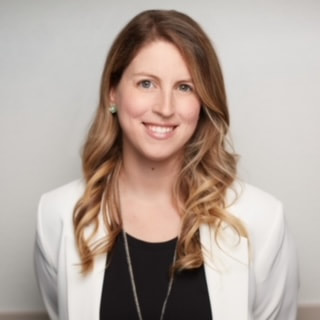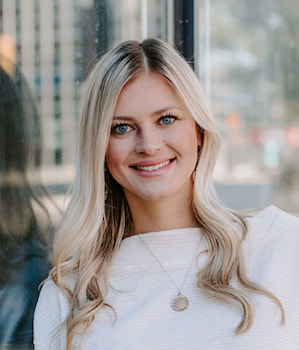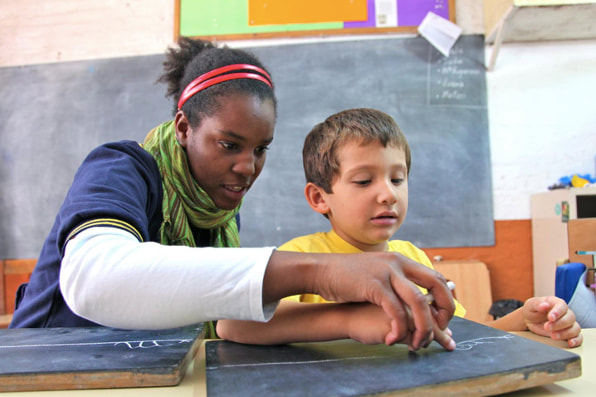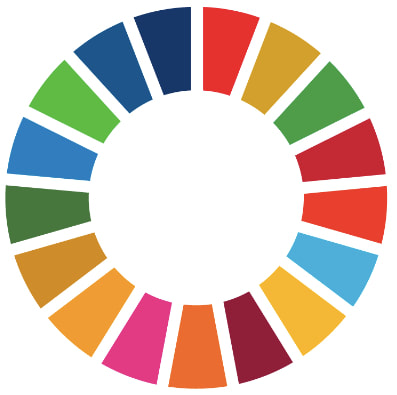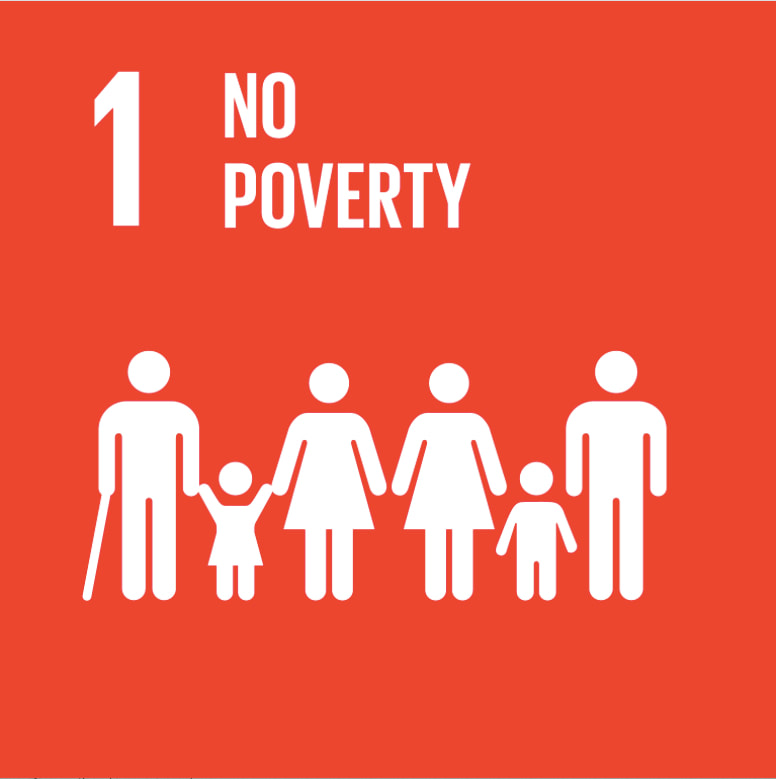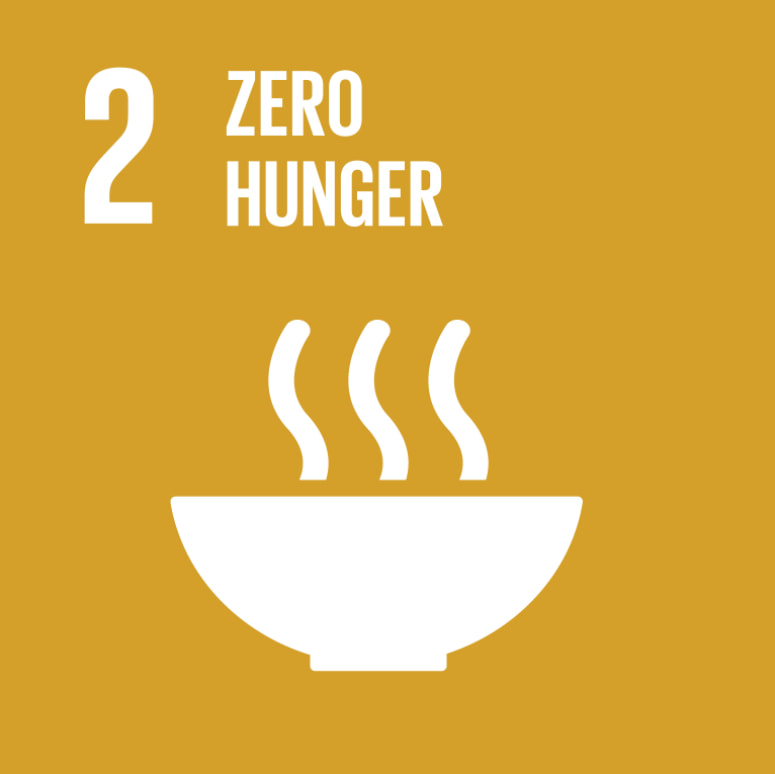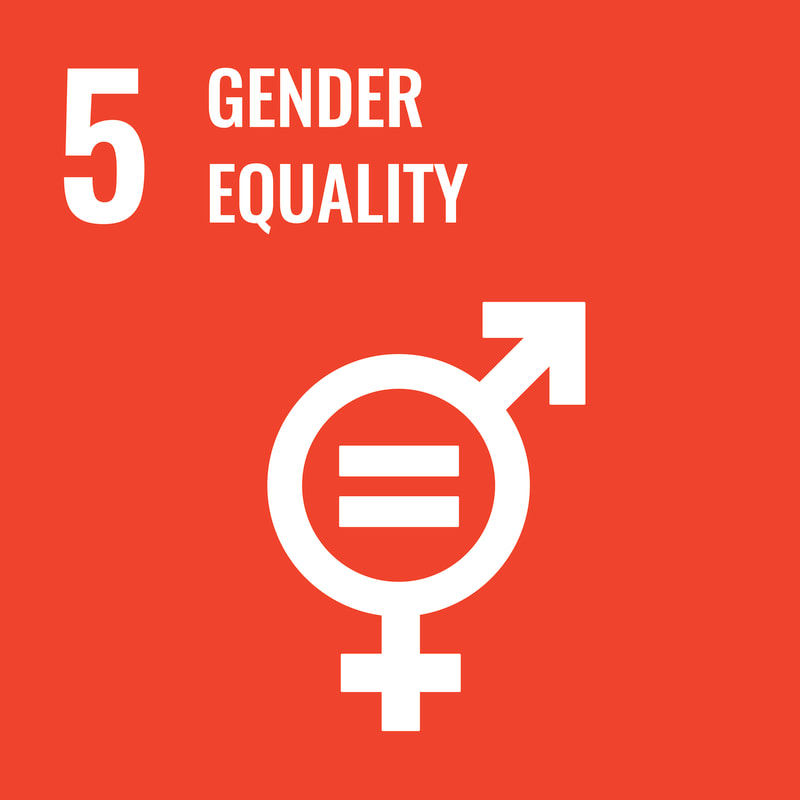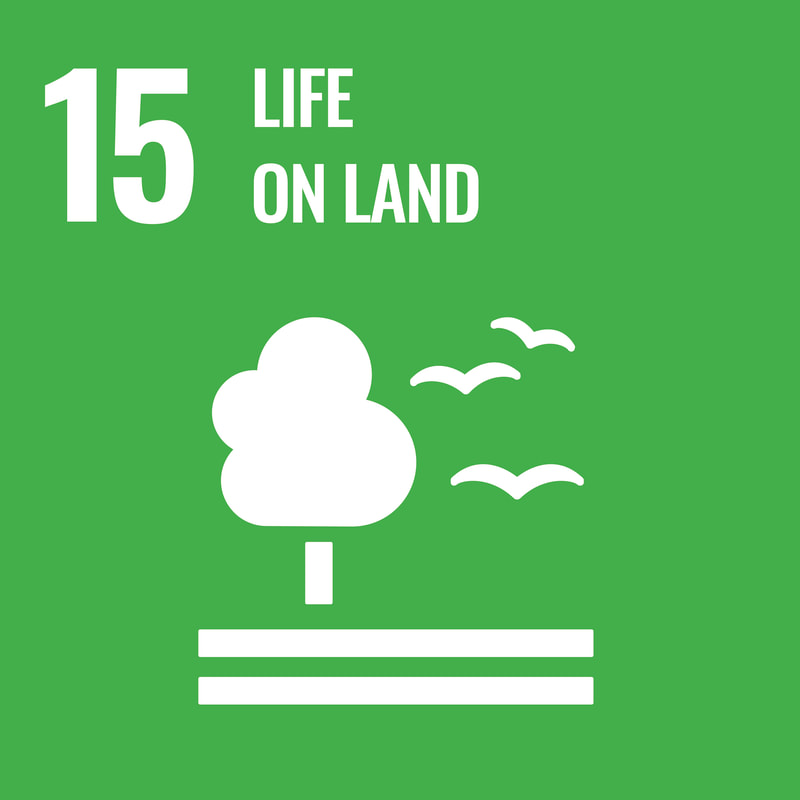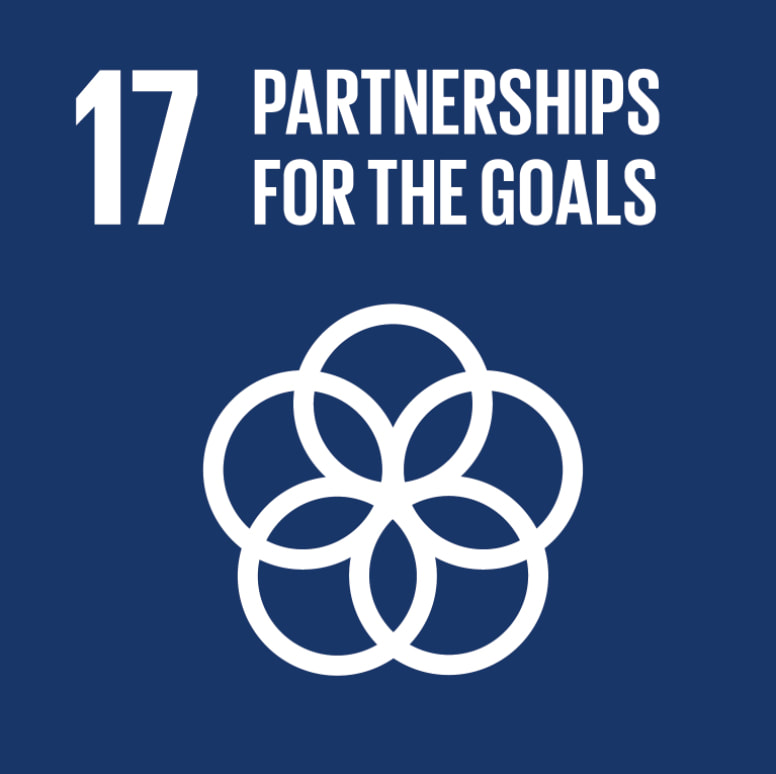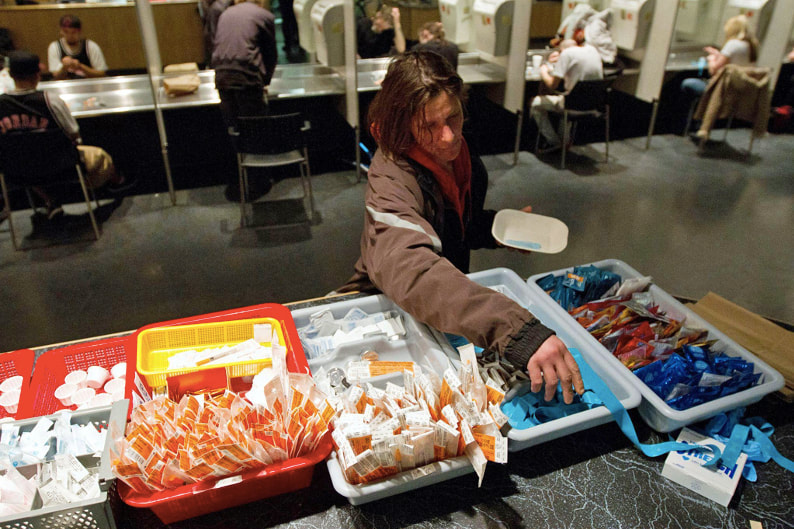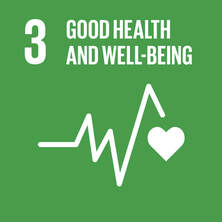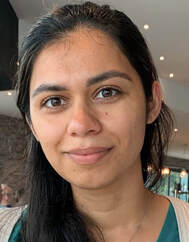DATELINE: APRIL, 2022
|
We are three nurses who have been drawn together as if by divine design and a soul–calling. Five years after meeting, we still find ourselves reflecting on the evolution of our kinship with gratitude and awe. It became apparent very early on why we were pulled together. We shared a vision: a deep undeniable yearning to nurture a new way of being for both ourselves and for others, to share our passion for whole-health and well-being within the world — empowering the 'Future of Nursing.'
Our hearts wanted to ease the suffering of nurses worldwide; and, to provide the support and tools needed for new nurses to show up with resiliency and an awareness that compassion and caring starts first within themselves. A much-needed shift had to occur from a state of simply doing and surviving to one of flourishing and thriving. A seed was planted in our hearts…a seed that would lead us to a new way of knowing, doing, and being. |
“Our hearts wanted to ease the suffering of nurses worldwide. But a much needed shift had to occur from a state of simply doing and surviving to one of flourishing and thriving.”
|
|
Each of us has a very personal story and reason for being where we are today and for creating what we've created thus far. We are still waiting for the day the three of us can finally meet in person, yet we know in our hearts and souls that we have been brought together in this lifetime to do something special. It began with Sherry’s vision of creating a holistic nursing and nurse coach certificate program
|
in Canada. Organically, everything has grown and shifted — and the need and divine responsibility to do more — evolving into an entire institute — The Canadian Institute of Integrative Nursing Development & Education Ltd — TheCIINDE © — pronounced 'The Kind'. We recognize our responsibility, our calling to facilitate this program, and so much more. We are happy to share that we are expanding our offerings through the work of TheCIINDE© to nurses both locally and globally.
|
“We are interwoven like the heart's four chambers, each with our unique function, purpose, and contribution to the collective whole.”
“We followed our hearts and dared to pursue our dreams.”
|
We are women, mothers, and nurses… we are three souls who found ourselves on the same frequency, three women on a journey to bring forth and birth this brave new way of being and nursing. As three nurses, in divine union with spirit, we are interwoven like the heart's four chambers, each with our unique function, purpose, and contribution to the collective whole. Our hearts are beating as one, in unison with spirit, to revive the heart of nursing. We nurtured and mothered this divine assignment until the seed was ready to be birthed.
With each graduating cohort of students, our community and collective consciousness expands. With each student, we see a transformation from being overwhelmed, exhausted and discouraged to being ready to reimagine nursing! This is a powerful testament to the power of community and connection. |
|
There is no way we could have ever known the extent to which our hearts and community would grow. We followed our hearts and dared to pursue our dreams. Creation is a thing of love, and where there is love, there are always miracles and limitless possibilities.
|
|
|
WHAT? What is TheCIINDE ©?
What began as the desire to create a program, quickly evolved into the institute that we are sharing today. TheCIINDE © came together from a collective desire to increase awareness around the power of holistic nursing and nurse coaching, particularly in Canada. Our mission at TheCIINDE © is to revive the heART of nursing by advocating for a holistic care approach that integrates eastern and western philosophies beginning first with the health and wellbeing of the nurse. We are reimagining the advancement of nursing by advocating for the expansion of holism and healing in nursing practice. We have the power to reimagine a world where we are proactive in our approach to healthcare, rather than reactive. We believe this is the heART of nursing! “We are reimagining the advancement of nursing...”
|
WHERE / WHEN?
The Canadian Institute of Integrative Nursing Development & Education Ltd. © was born in 2020.
The year 2020 was named the year of the nurse by the World Health Organization, and this was also serendipitously when we launched TheCIINDE© and offered our first course in holistic nurse coaching-both being the first of its ‘kind’ in Canada. We could not have foreseen how needed this program would be on a global level as events of the pandemic continued to escalate, and nurses were at the forefront of a crumbling health care system.
The Canadian Institute of Integrative Nursing Development & Education Ltd. © was born in 2020.
The year 2020 was named the year of the nurse by the World Health Organization, and this was also serendipitously when we launched TheCIINDE© and offered our first course in holistic nurse coaching-both being the first of its ‘kind’ in Canada. We could not have foreseen how needed this program would be on a global level as events of the pandemic continued to escalate, and nurses were at the forefront of a crumbling health care system.
“grounded in standards of practice... designed to support nurses through a self-care...
while expanding on the concept of nurse as a facilitator of healing for self and others.”
while expanding on the concept of nurse as a facilitator of healing for self and others.”
The Comprehensive Holistic Nurse & Coaching Certificate Program, grounded in standards of practice, was designed to support nurses through a self-care and healing process while expanding on the concept of nurse as a facilitator of healing for self and others. Experiential learning activities—based on integral nursing theory—are used to enhance self-awareness, intuition, and the connection between mind-body-spirit-environment. This heightened awareness of self positions nurses to be facilitators of healing, with students reporting a profound change in the way they show up for themselves and others.
|
“We must learn to support ourselves and one another in attaining and sustaining optimal health, wellness, and wellbeing. It is time to think outside the box that defines and confines nursing.”
“ The current and future anticipated nursing shortage is a global health issue.... and nurses have reached a breaking point, with many leaving or on the verge of leaving the profession.”
|
WHY?
Nursing truly is a calling of the spirit, an inner nudge to ease the suffering of others and to bring comfort and joy to humankind. It is a noble profession, yet it doesn't mean that it comes easily to nurses. In fact, of all the services to humanity, nursing is one of the most difficult and challenging services one can offer. We must learn to support ourselves and one another in attaining and sustaining optimal health, wellness, and wellbeing. It is time to think outside the box that defines and confines nursing. The current and future anticipated nursing shortage is a global health issue. The COVID-19 pandemic has exposed deep cracks in Canada's health care system and the nursing shortage has reached a dangerous tipping point. Clinical levels of burnout are at an all-time high, and nurses have reached a breaking point, with many leaving or on the verge of leaving the profession. Our vision at TheCIINDE © is to advocate for the advancement of holism and healing in both nurses and nursing practice. We believe that nurses with advanced skills in holistic nursing and nurse coaching can be key influencers in ‘well-care’-in preventing disease and promoting optimal health and wellbeing. We believe that all individuals deserve care that respects and honors their needs and choices; acknowledges the role of environment, culture, social connection, the intricate connection between mind-body-spirit, and the healing process; and is grounded in evidence-informed/based research and practice. |
|
HOW?
Most people confine holistic nursing to something a nurse does; however, it is truly a way-of-being. It is a mind-shift focused first and foremost on the nurse’s development of self. It is honoring and caring for self that includes a developing sense of self-awareness, self-compassion and self-acceptance. It incorporates mindfulness and self-compassion into every thought and action. Ultimately, it is about showing-up-differently and being a role model for others. Staying true to this philosophy, our vision isn't to provide a guide on 'how-to do Holistic Nursing’; rather, it’s to provide a safe and brave space for nurses to come together in community to support one another in personal growth while learning what it means to be a holistic nurse coach. We also explore holistic approaches and tools, such as nurse coaching, that can be used in practice to bring comfort to and ease the suffering of clients and encourage and support clients in taking responsibility for their own health and well-being. The holistic nurse coach does not try to fix the client; instead, the client’s strengths are emphasized and the client is guided in a way that is both motivating and empowering. |
“a developing sense of self-awareness, self-compassion and self-acceptance.”
“to provide a safe and brave space for nurses to come together in community to support one another in personal growth...”
We do not “try to fix the client; instead, the client’s strengths are emphasized and the client is guided in a way that is both motivating and empowering.”
|
|
“effective change first evolves from within...”
|
A holistic nurse coach incorporates coaching skills, integrates a holistic perspective, promotes awareness that effective change first evolves from within, works with the whole person to utilize principles and modalities that integrate body-mind-emotion- spirit - environment while facilitating a skilled purposeful results-oriented interaction that promotes the achievement of the client’s goals.
|
|
We are honored to walk alongside our students and witness the transformation that takes place as they learn to embed a holistic approach into their own lives, and how it becomes an innate calling to become a true advocate of this new way of being. We recognize that healing goes to the heart, root and core of who we are. Healing is our individual birthright, and we want to ensure it is available to everyone. By ensuring quality education and care that starts with the nurse, we are influencing a ripple effect that will be far-reaching.
|
“ We are honored to walk alongside our students and witness the transformation...”
|
|
“By ensuring quality education and care that starts with the nurse, we are influencing a ripple effect that will be far-reaching. ”
|
We believe that healing is a unique and authentic process. It encompasses our individual stories, life patterns, fears, traumas, belief systems, thoughts, ancestors, lineage, and energetic programming; and, is the sum of every single choice, lesson, and life experience we have. Therefore, we believe we should not compare any aspect of our journey to that of anyone else. We are each so bio-energetically different that our response to diet, medications, supplements and lifestyle is radically individualized. At TheCIINDE ©, we support individuals in tuning into their own innate intelligence and finding freedom in their body, mind, and spirit. True freedom occurs when we realize our boundless potential and when we observe our body's capacity to heal itself.
|
With a growing emphasis on our collective and global health, TheCIINDE © is committed to creating a global community of nurses who support, encourage, and inspire one another to enhance the overall well-being of both themselves and the collective. As we revive the heART of nursing, we envision a world where nurses honor nurses, support one another, and advocate for adopting a lifestyle where self-care is embedded in everything they do. We can shift how we reflect on our health as we care for ourselves as individuals, as families, and as a global community. We can find new and innovative ways to strengthen our commitment to caring and living wholeheartedly, while also advocating for healthy people on a healthy planet.
To work towards this goal, we are honored to share that TheCIINDE © was granted accreditation for nursing continuing professional development (NCPD) in November 2021, from the American Nurses Credentialing Center (ANCC). This accreditation demonstrates our commitment as an innovative organization to using evidence-based criteria when developing high-quality educational initiatives that promote the professional growth of nurses.
To work towards this goal, we are honored to share that TheCIINDE © was granted accreditation for nursing continuing professional development (NCPD) in November 2021, from the American Nurses Credentialing Center (ANCC). This accreditation demonstrates our commitment as an innovative organization to using evidence-based criteria when developing high-quality educational initiatives that promote the professional growth of nurses.
|
The Comprehensive Holistic Nurse & Coaching Certificate Program is a program that has been peer-reviewed and endorsed by the Canadian Holistic Nurses Association (CHNA),AND accredited by the American Nurses Credentialing Corporation (ANCC) and the Canadian Nursing Association (CNA), for 135 Continuing Professional Development Hours and Continuing Nursing Education Hours. Students successfully completing this program receive a Certificate in Holistic Nursing and Nurse Coaching. This program creates a sense of community for nurses who are looking for a new way of being and nursing that honors a holistic and wellness focused approach, regardless of the area of expertise.
|
About the Authors
|
Sherry Hole — MN, BN, RN, HN-
BC, HWNCBC — is a Certified Integrative Mental Health Coach with a strong passion for holistic healing. Her vision of a world where Eastern and Western medicine collaborate, inspired her to create The Canadian Institute of Integrative Nursing Development & Education Ltd (TheCIINDE©). Sherry’s diverse nursing career began in 1991 with a diploma in nursing, followed by a degree in nursing, a Master of Nursing, a Certificate in Mental Health Nursing, and a Diploma in University Teaching from the University of New Brunswick — where she served as faculty until 2018. Sherry believes in the power of holistic nursing and coaching to guide, support, and mentor people in achieving and sustaining healthy wholesome lifestyles. In 2015, she became an Executive Board Member with the Canadian Holistic Nurses Association (CHNA)—the first international chapter of the AHNA. Her most recent project was leading the revision and development of the new Canadian Holistic Nursing Standards of Practice. [email protected] |
Janessa DeCoste — BScN, RN, MN (C), NC-BC, CCHNC — shares her passion for holistic nurse coaching and independent
practice development through her role as co-founder, faculty and VP of Nurse Coaching and Independent Practice Development at The Canadian Institute of Integrative Nursing Development & Education Ltd (TheCIINDE©). Janessa earned her degree in nursing from Saint Francis Xavier University in Antigonish, Nova Scotia and is presently working towards her MN in Nursing at the University of Calgary. Janessa is passionate about educating nurses about Nurse Coaching in Canada, advocating to regulatory bodies across Canada, and working with nurses to help them launch their independent practices. She has developed a Business Development Program for Nurses — in collaboration with TheCIINDE© — to explore what independent practice for Nurse Coaches and Consultants looks like through a Canadian lens. One of her core values is her love and passion for learning, where most recently, she has been exploring holistic business building strategies and the power of Quantum Human Design for nurse entrepreneurs. [email protected] |
Kimberly Derkach, BScN, RN, CCHNC is a Certified Holistic Nurse Coach who shares her passion for holistic nursing through her role as cofounder, faculty, and VP of the Integrative Education and Spiritual Development at The Canadian Institute of Integrative Nursing Development & Education Ltd (TheCIIND c)). E). Kimberly earned her degree in nursing from the University of Saskatchewan, where she also serves as faculty. The heart of her work is
empowering people to see everything they need to heal lies within them, and is inspired through her training as a Nurse, Reiki Master, Certified Medical Intuitive, and through many other energy and healing modalities. She shares her expertise through various organizations and community initiatives, including TheCIINDE©, the Canadian Holistic Nurses Association, and The Life is Worth Living Way. [email protected] |
|
Although the right to the highest standard of education is acknowledged globally, students with disabilities (SWD) face many challenges that make it difficult for them to have the same quality of education as other students. Disabilities come in many forms with over 1 billion people estimated to be living with a disability. These students experience many barriers such as discrimination, inaccessible school facilities and more. Globally, SWD are less
|
Support staff using learning strategies to help a disabled child (UNCEF)
|
likely to complete school than non-disabled students and it is estimated that 55% of children with disabilities are not in secondary level education in low-middle income countries. Many of these countries are pushing for more inclusive policies, which allow SWD to attend school with other students their age. Countries have developed their own strategies on reaching the targets in the Sustainable Development Goal #4 of Quality Education. Whether through advocacy or participation in schools, nurses can also play a role in reaching this goal.
|
Who are students with disabilities?
Many of your classmates or colleagues are or were SWD, including one of our writers. It is estimated that 93 million children have a disability worldwide. Disabilities can range from attention deficit disorders, vision and hearing impairment, brain injuries, learning disabilities, medical disabilities, physical disabilities, psychiatric disabilities and speech/language disabilities. SWD require unique accommodations in accessing and participating in school which can be found in John Hopkins's student disability service information.
|
“Disabilities can range from attention deficit disorders, vision and hearing impairment, brain injuries, learning disabilities, medical disabilities, physical disabilities, psychiatric disabilities and speech /language disabilities.”
|
When were the rights of SWD recognized?
|
Atila Komaromi, a young boy with intellectual disabilities participating in school after advocating for ramps and a specialized desk (UNICEF, 2017)
|
There are many discriminatory attitudes towards persons with disabilities, which perceive them as incapable and unhealthy, and these attitudes can result in parents and society not grasping the need for these students to attend school and have high quality education. With discriminatory attitudes, their needs become neglected. This results in a reduced number of educational locations with specialized services, especially in rural areas, forcing children to travel long distances or local schools being under-resourced. When schools are under-resourced, there are less support staff and assistive devices available to the students. These barriers result in many of these students not enrolling in school programs or dropping out. It is estimated that 7 out of 10 youth with disabilities in the world are not in school . Losing their education puts them at risk for being excluded from society and social networks and limited economic opportunities.
|
What is being done for these students?
|
Enhancing local support in remote areas by creating school-community partnerships allows for parents and communities to work together to advocate for equal education. An example of these types of programs is UNICEF's Makani Program in Jordan and refugee camps. Many countries are working to increase funding to specialized education programs and related services such as accessible buildings, professionally trained staff, and learning resources like assistive computer software. This is being advocated, for example, in First Nation reserves in
|
A student with a disability on her way to school (UNICEF, 2021)
|
Canada where students receive less funding for special needs classes. Additionally many lower-middle income countries are addressing negative attitudes by advocating for implementation of inclusive policies, by giving SWD the opportunity to receive education in the same institutions as other students, while also having their unique needs addressed.
How are students with disabilities relevant to SDG #4?
|
SWD is a global health challenge that is relevant to SDG #4 because they face many challenges that act as barriers to their education, ultimately decreasing the quality of education they receive. There are three targets from SDG #4 that are closely related to SWD that are not being met. SDG #4 can be achieved by building disability-friendly educational facilities such as ramps and elevators, implementing transition programs and training teachers to have appropriate teaching methods for SWD. Inclusive education systems is an important method that schools around the world should adapt, as they allow for an equitable education system for all.
|
How can nurses get involved in addressing students with disabilities globally?
The core objectives of ethical nursing practice consist of improving the health and well-being of individuals, regardless of their conditions. This can be done through advocating for an increase of school nurses and for an inclusive education system. In this way, nurses can provide the support necessary to educational providers, as well as SWD so that they may receive quality education, providing them with future learning opportunities. Education is a social determinant of health greatly impacting this population, and it is through its improvement, that nurses can play a role in improving the health outcome of SWD.
A licensed school nurse talking with a teacher about the health care plan of the student with cerebral palsy (Joles, 2019)
Call out to Nurses
|
Overall, the poor quality of education for students with disability is an issue that must be addressed in order to meet SDG #4. Advocating for schools to be disability friendly, and have an inclusive education system are solutions that will help meet SDG #4. We believe that—for future implications—nurses should advocate for better efforts of reporting data on SWD in schools so we can better understand their needs. Hence, we want to call out all nurses and nursing students, and remind them that as leaders of change they can use their knowledge and voices to make a positive impact.
|
“We believe that—for future implications—nurses should advocate for better efforts of reporting data on SWD in schools so we can better understand their needs. ”
Story References available for download here
| ||
From the Authors

My name is Karissa Salama-Frakes and I am a 4th year nursing student at York University. Since my school-aged years, I've had an interest in global health. I completed my first degree in nutritional science with the goal to work internationally with a focus on food insecurity and malnutrition. This goal was broadened as I decided to enter the field of nursing and focus on the intersectionality of the social determinants of health and how these play a role in global health. I believe it is important for student nurses to empower others to create their own goals on how they want to make an impact globally. We tend to think that as a single person we cannot make a difference. But—in reality— our one idea can be incorporated with others to help find solutions to global issues. The UN SDGs are important for everyone in the world to understand because these open our eyes to the inequities we see around the world as well as to simple rights such as education, food, and clean water. I myself am a student with a disability and have been fortunate enough to attend educational facilities that accommodate my specific needs. However, by doing my own research, I am now aware of how little accommodation is given to other students with disabilities around the world, even in Canada. Without doing the research, I would never have known about the barriers faced by other students. Knowledge empowers us to advocate for those lost rights.
|

My name is Juan Senmache and I am a fourth year BScN student at York University in Canada. Entering the nursing profession comes with the importance of understanding the global health issues present, and the ways these can be addressed to improve the healthcare system and social determinants of health for individuals. Nurses are the most active healthcare individuals in that they advocate for vulnerable populations and have the ability to address the challenges faced around the globe. It is by doing this that we can share our knowledge, experiences, and ultimately engage others to support us in making a positive change in the health systems globally. Nurses are leaders and agents of change. So—if they can take what they learn from their interactions with patients, coupled with their internal access to the health care system—they can ultimately improve the health care systems worldwide. It is essential that nurses inform and empower others to participate and take action into meeting the UN SDGs because these have been put in place with the goal of achieving a better and more sustainable health system and of improving the future of all. Although this is a hard task, nurses can raise awareness, through social media and other platforms, as this is an easy method of connecting with others around the globe and ensuring people know how important these goals are. It is through this awareness, that a strong global support group can be built, and it will lead to make a positive impact in the world. SDG Colour Wheel and Logos 3 & 4 used with attribution
|
Homelessness: A Global Health Challenge
|
by Heer Shukla & Heli Shukla
York University / HH/NURS Course 4546 *** Health & Homelessness:
The Latest Updates Homelessness is a social issue that severely impacts the physical and mental health of homeless individuals in both developing and developed countries. We are a fourth-year nursing students writing this news article based on an increased number of homeless people worldwide with poor health outcomes. We believe that homelessness is a global health challenge as it is evident worldwide among all age groups. Is is a result of the complex social conditions that arise in one’s life affecting their mental, physical, and psychosocial life |
A homeless individual on the streets of Toronto downtown who panhandles for money (Goodman, 2014).
|
which ultimately leads to maladaptive behaviors and life changes. Homelessness is a form of poverty and to address this issue nurses play an important role as global health initiators to advocate for the health and well-being of all while accomplishing the #1 goal of Sustainable Developmental Goals to end poverty everywhere.
|
According to the article by Louise (2020), the factors leading to homelessness include unemployment, affordable housing, domestic violence, mental health issue, substance abuse, and discrimination. Many studies have proven an increased morbidity and mortality rates among homeless individuals as a result of inadequate living and housing conditions experienced by them, which increases their susceptibility to chronic diseases, communicable diseases, malnutrition, and mental health problems (Baxter et al., 2019).
|
“Homelessness is a global health challenge as it is evident worldwide among all age groups.”
“factors include unemployment, affordable housing, domestic violence, mental health issue, substance abuse, and discrimination.”
|
|
“women worldwide—especially single
mothers-- are affected by homelessness. ” |
Locally in Canada, the Homelesshub reported many vulnerable communities including indigenous people, seniors, single male adults, youths, individuals with mental health issues, women who have experienced intimate partner violence, immigrant families and single parents usually females that are affected by homelessness. On the other hand, according to the MAHB Admin, globally people who have physical and mental disability, people with substance use, people who experienced domestic/intimate violence and women—especially single mothers worldwide—are affected by homelessness.
|
|
In the article by Mabhala et al. (2017) homelessness is mainly evident in low-middle income countries with low levels of education, employment instability and lack of affordable housing as well as countries undergoing a social disadvantage along with traumatic events are experiencing homelessness.
Our research on the global health challenge of homelessness suggests that people of all ages are affected by this issue. This raises a question as to what the world leaders are doing to combat the issue. The United Nations (UN) have outlined their goal to reduce and prevent homelessness by gathering accurate data on global homelessness and supporting effective strategies to end homelessness. In 2015, the UN developed the 17 Sustainable Development Goals (SDGs) to promote sustainable development globally. As outlined by Nash et al. (2020), the first SDG is defined as “End poverty in all its forms everywhere” which focuses on eradicating homelessness worldwide thereby addressing this social determinant of health. |
Overcrowded shelter homes in downtown Toronto show an increase in homeless people (Neufeld, 2021).
|
This SDG of ending poverty relates to the global health challenge of homelessness as homelessness represents a form of poverty wherein an individual or family is financially incapable to afford an adequate place to stay or are placed under certain circumstances that leads to poverty and homelessness altogether such as mentally or physically ill to work (Mabhala et al., 2017).
|
Nurses can achieve the SDG of ending poverty by advocating for healthy public policies for homeless individuals and raising awareness on the poor health outcomes experienced by these people. The Registered Nurses’ Association of Ontario states the professional responsibilities of nurses is to speak out against the issue of homelessness in order to protect the health of all.
Nurses can advocate for healthy policies that promote affordable housing to allow for low-income families or individuals to have a safe and appropriate place to live in as well as promote the need for supportive housing for individuals who are suffering from physical or mental health problems (RNAO, 2019). Globally, we would like to call out nurses to achieve this SDG by incorporating Florence Nightingale’s philosophy where nurses advocate, support, navigate and care for homeless individuals to allow for safe environment that promotes health and well-being of all (Frazer, 2020). |
Cathy Crowe is, a street nurse and a social activist who has worked on the streets of Toronto for 30 years helping many homeless people providing nursing care and advocating on behalf of them (Crowe, 2019).
“Globally, we would like to call out nurses to achieve this SDG by incorporating Florence Nightingale’s philosophy where nurses advocate, support, navigate and care for homeless individuals to allow for safe environment that promotes health and well-being of all.”
|
Author Biographies
Editor's Note: These two student authors are twin sisters who, as you'll see, have much in common!
You are also welcome to submit your story. See the Guidelines >>>
Addressing Stigma Against Persons Who Use Drugs:
|
Purpose: To illustrate, how stigma related to substance abuse influences SDG #3 on an individual, family, community, and global level and how the upstream approach taken by everyone will help alleviate the global health challenge.
|
Substance abuse is a serious public health problem that impacts society on multiple levels. The stigma related to substance use has resulted in discriminatory policies which deny the person who uses drugs from accessing numerous rights and opportunities. Stigma can lead a person to hide their drug use and avoid getting help because they are afraid of the judgment of others and imprisonment, depending on their geographic location. The several sustainable development goals that will be impacted by addressing drug abuse on a global scale are: SDG #1—End poverty in all its form everywhere; SDG #2—End hunger, achieve food security and improved nutrition and promote sustainable
|
agriculture; SDG #3—Improve overall health and wellbeing; SDG #5—Gender Equality; SDG #15—Life on land; SDG #16—Peace, justice and strong institutions and SDG #17—Partnerships for the goals — all social and environmental health determinants. Ultimately, substance abuse is a cumulative social, mental and physical challenge that must be addressed globally, as it increases communicable and non-communicable diseases, leading to the declined health of an individual, community or the entire globe. Multiple determinants of health force an individual to use drugs; thus, as nurses—by integrating education and awareness-raising on drug use—we will help address the substance use issue, which will result in improvements in global population health.
|
What is drug abuse?
Drug abuse is associated with the consumption of substances that alter one’s mind and behavior and have negative health outcomes. The stigma surrounding drug users is their inability to quit taking drugs stems from a lack of willpower. In truth, drug addiction is a complicated disease that alters the brain in such a manner that even people who wish to quit find it difficult. Less than 8% of people who use drugs worldwide have access to needle and syringe programs, and in some countries, particularly Russia, opioid substitution therapies remain illicit. |
“Ultimately, substance abuse is a cumulative social, mental and physical challenge that must be addressed globally.”
|
|
“In truth, drug addiction is a complicated disease that alters the brain in such a manner that even people who wish to quit find it difficult.”
|
|
“There is no one-size-fits-all image of drug users: They come from a variety of backgrounds.”
[But] “drug addiction does incalculable harm to public health and safety across the world.”
|
Who is affected by drug abuse? How?
Individuals, families, and communities are all affected by substance misuse. Substance misuse has a cumulative effect, immensely contributing to costly social, physical, mental, and public health issues. These issues include adolescent pregnancy, HIV/AIDS, other sexually transmitted diseases (STDs), domestic violence, and suicide, among others. There is no one-size-fits-all image of drug users: They come from a variety of backgrounds. Drug addiction has a systematic, economic, and social impact on an individual's life—that can lead to poor health in general. Every year, drug addiction does incalculable harm to public health and safety across the world. Drug addiction and poverty are also inextricably connected. Drug addiction may arise to alleviate the stress caused by poverty, persistent social tension, and other traumatic experiences, leading to physical harm. Thus, most countries in the world are afflicted by a drug epidemic. |
|
Where is it happening?
Drug abuse is affecting most communities locally and globally. According to the newest World Drug Report, issued October 2021, by the United Nations Office on Drugs and Crime, over 269 million individuals used drugs worldwide in 2018, a 30% increase from 2009, and over 35 million people suffer from drug use disorders (UNODC). Adolescents and young adults make up the majority of drug users, and they are also the most sensitive to the effects of drugs, since they use the most and their brains are still developing. |
“Drug abuse is affecting most communities locally and globally.”
|
|
“...to help drug users live their best lives.”
“Poverty, lack of education, and social marginalization are considered to be critical risk factors...”
|
What is happening locally & globally?
Locally, the Durham region, Ontario, is facing a crisis of drug overdose, as between 2013 and 2017, the number of opioid deaths in Durham increased by 222% from 18 in 2013 to 58 in 2017. In 2017, the number of overdose-related emergency room visits increased by 124% to 389%. Switzerland is a global success story: The swiss government couldn't stop drug users, so they started helping them by building 300 harm reduction facilities, which feature needle exchanges, spaces to wash, do laundry, and meet with social workers, psychiatrists, and medical specialists. The entire network collaborates to help drug users live their best lives. |
|
Why is drug abuse happening?
Poverty, lack of education, and social marginalization are considered to be critical risk factors for substance abuse disorders. Hence, discrimination and stigma prevent vulnerable and underprivileged people from receiving treatment. Furthermore, barriers to accessing social determinants of health and globalization of the drug market can also contribute to why a person may struggle with drug addiction. A client of the Insite supervised injection Center in Vancouver collects her kit (Dorkin, 2017), — with attribution.
|
|
“...because it can have many adverse consequences.”
|
How is drug abuse relevant to SDG #3?
Plus raising awareness through sports! Drug abuse is relevant to SDG #3 because it can have many adverse social, psychological, and physical consequences. As a result, it impacts the SDG #3, thus impacting the good health and well-being of individuals. We can achieve SDG #3 by raising awareness on substance abuse through sports. Sport can be used as a platform to speak out for the realization of human rights. For instance, through collaborations with local and international authorities, sports may raise and produce funds for substance use programs, along with aiding in increasing awareness and supporting the mobilization of essential resources to reduce addiction. Lastly, sport may also improve mental health by conveying social, psychological, and physiological benefits. |
|
How can nurses get involved in addressing drug abuse globally?
The core objectives of ethical nursing practice are to improve the individual’s health and well-being regardless of age, income, gender, and other socio-economic factors. Harm reduction values of are congruent with the values outlined in the CNA code of ethics. Thus, nurses can influence the development of organizational and governmental policies on harm reduction. Nurses must continue to be prominent in advocating for and delivering culturally competent care using the upstream approach, hence addressing globalization with regards to use of drugs worldwide. |
Nurses at the forefront in global health from the Pan American Health Organization, 2020
|
|
“...we call on other nurses, health care providers and other professional bodies to take a multifaceted approach to address the impacts...”
|
Overall, drug abuse is a serious health issue that can influence SDG #3. To meet SDG #3 by 2030, substance abuse must be taken seriously globally. Thus, we call on other nurses, health care providers and other professional bodies to take a multifaceted approach to address the impacts of the social determinants of health and globalization on drug abuse. Future research should be focused on how reducing stigma against drug abuse will impact the individual seeking help, thus improving mortality and morbidity.
|
|
|
From the Authors
|
|






